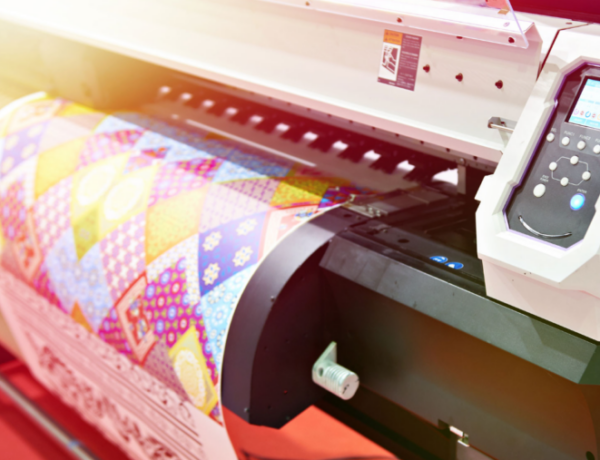The printing press revolutionized the way information was disseminated and made books available to a wider audience. Before the invention of the printing press, books were laboriously hand-copied by scribes, making them rare and expensive. Gutenberg’s invention in the 15th century paved the way for the mass production of books, democratizing access to knowledge and ideas.
Gutenberg’s Printing Press

Source: youtube.com
Gutenberg’s printing press revolutionized the way information was shared and paved the way for the democratization of knowledge and ideas. Before its invention, texts were rare and expensive, making them inaccessible to the masses. However, with the mass production of books enabled by Gutenberg’s printing press, they became more widely available and affordable. Today, book printing services continue to offer a range of options and publish them, from small-scale self-publishing to large print runs for commercial publishers. This was the first step in a long evolution, which now include digital and print-on-demand options. These modern methods have made it possible for authors and publishers to reach wider audiences and offer more personalized and customized solutions. Despite these advancements, however, the legacy lives on, reminding us of the profound impact that a single invention can have on the dissemination of knowledge and ideas.
Overview of Gutenberg’s Printing Press
It was based on the idea of movable type, which allowed for the efficient printing of multiple copies of the same text. This process involved arranging individual letters, numbers, and symbols on a metal plate and inking them before pressing them onto paper. The movable type system allowed for the easy production of multiple copies of a text, greatly increasing the speed and efficiency.
Impact of Gutenberg’s Printing Press
The impact cannot be overstated. Before its invention, they were rare and expensive and were typically only available to wealthy individuals or institutions. Gutenberg’s press made texts more widely available, reducing their cost and increasing their availability to a wider audience. This helped to spur the spread of knowledge and ideas throughout Europe, leading to an era of cultural and intellectual flourishing.
Legacy of Gutenberg’s Printing Press
Gutenberg’s printing press was a game-changer for the dissemination of knowledge and ideas, and its legacy can still be felt today. The press made it possible for knowledge to be shared more widely, paving the way for scientific, cultural, and political revolutions that have shaped the course of human history. Additionally, Gutenberg’s press inspired future innovations in technology, including the development of offset stamping, which has further transformed the stamping industry.
Offset Printing
The next major innovation in text printing came in the 19th century with the development of offset printing. This technique involved transferring ink from a metal plate to a rubber blanket and then onto the paper. Offset stamping was faster and more efficient than traditional letterpress stamping, as it allowed for larger print runs and reduced wear on the stamping plates.
The introduction of offset stamping also paved the way for the development, which was cheaper and more portable than hardcover texts. This led to an even wider dissemination, making them more accessible to the masses.
Digital Printing

Source: pinterest.com
Digital printing has revolutionized the stamping industry, providing an efficient and cost-effective method for printing a wide range of materials. Unlike traditional methods, digital stamping relies on digital files to print high-quality images and text on various surfaces.
Overview of Digital Printing
Digital stamping is a modern printing technology that uses digital files to print images and text onto a range of surfaces. It is a versatile and flexible process that can be used for a variety of applications, including brochures, posters, business cards, packaging, and labels. It is different from traditional stamping methods, which require plates and ink.
Advantages of Digital Printing
One of the biggest advantages is its flexibility. Digital stamping allows for quick and easy customization of jobs, with the ability to easily modify images, text, and colors. Additionally, digital stamping offers fast turnaround times, as it can be done immediately after receiving the digital files. Digital stamping is also cost-effective, as it eliminates the need for expensive plates and reduces setup costs.
Applications of Digital Printing
Digital printing is widely used in this industry for a variety of applications. It is particularly useful for short runs of materials, as it offers a cost-effective solution for small print jobs. Digital stamping is often used to print marketing materials, such as brochures, flyers, and business cards, as well as packaging and labels. Additionally, it is used in the production of books, allowing for on-demand stamping and reducing the need for large print runs.
Future of Digital Printing
The future of digital printing looks bright, with continued advancements in technology and increased demand for customized solutions. New developments in stamping technology are expected to improve print quality, speed, and cost-effectiveness, making digital stamping an even more attractive option for stamping needs. Additionally, as businesses and consumers continue to seek out personalized and customized solutions, digital one is likely to become an even more prevalent method.
E-books

Source: pinterest.com
E-books, or electronic books, are digital versions of books that can be read on electronic devices such as tablets, e-readers, and smartphones. E-books have become increasingly popular in recent years, with many people opting to read digital versions of books instead of physical copies.
Overview of E-books
E-books is digital versions that can be read on electronic devices. They are typically downloaded from online retailers or libraries and can be read on a range of devices, including tablets, e-readers, and smartphones. E-books are usually less expensive than physical texts, and they offer a range of features, such as adjustable font sizes, the ability to highlight text, and built-in dictionaries.
Advantages of E-books
One of the biggest advantages is their portability. With an e-reader or tablet, readers can carry hundreds or even thousands of them with them wherever they go, without having to worry about the weight and bulk. Additionally, e-books are typically less expensive than physical books, and they can be easily downloaded and accessed from anywhere with an internet connection. They are also environmentally friendly, as they do not require paper or ink.
Applications of E-books
E-books are used for a wide range of applications, including personal reading, educational materials, and business publications. Many schools and universities are now offering them as an alternative to physical texts, allowing students to access course materials on their electronic devices. They are also used by businesses to distribute marketing materials and other publications.
Future of E-books
The future of e-books looks bright, with continued advancements in technology and increasing demand for digital reading materials. As electronic devices become more ubiquitous, and e-books become more affordable and accessible, more and more people will likely choose to read digital versions. Additionally, they may become even more interactive and multimedia-rich, offering new opportunities for authors and publishers to engage with readers.
Conclusion

Source: pinterest.com
The evolution of book printing from Gutenberg’s stamping press to digital printing has transformed the way we access and consume them. Gutenberg’s invention made them more accessible, while offset stamping made them cheaper and more portable. Digital printing and e-books have made it easier for authors to publish and readers to access texts, leading to a democratization of knowledge and ideas. Despite these changes, however, the love of reading and its importance remain as strong as ever.




